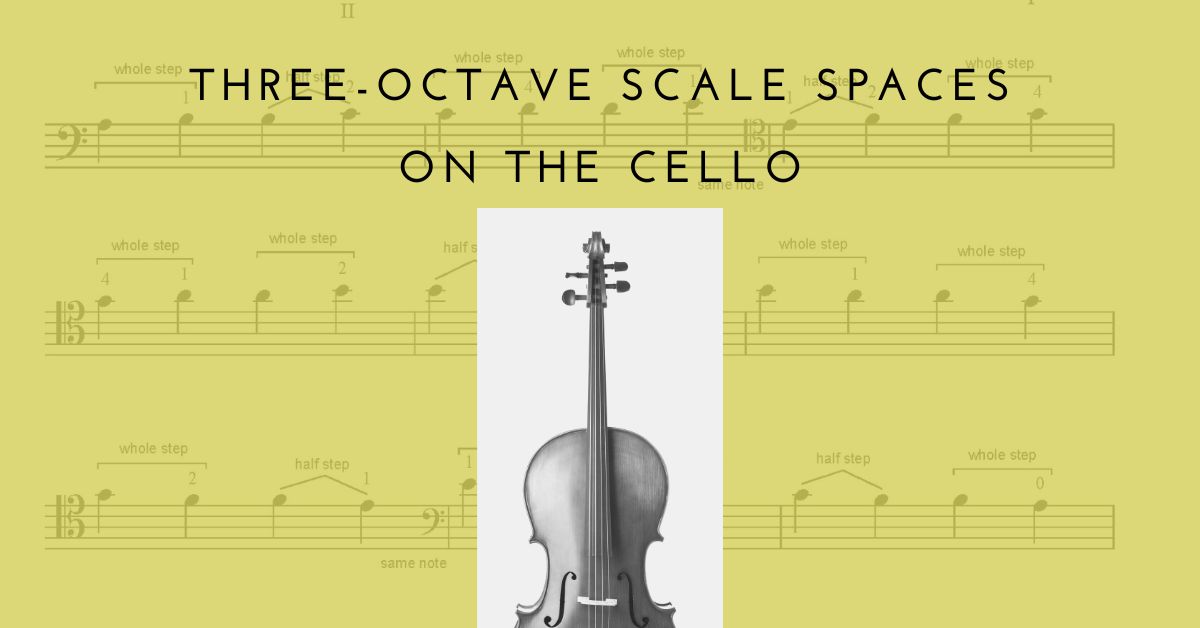A New Way of Learning Cello Scales
One of the best ways to map the fingerboard for your mind and fingers is by learning scales. Three-octave scales, in particular, can be used to teach nearly all of the notes on the cello.
As I watched over the years while some of my students struggled with knowing how far to shift in three-octave scales, I knew that there had to be a solution.
Surprisingly, the answer came while I was writing a scale book for the violin!
Because violinists typically play with four fingers in each position (1-2-3-4), instead of three (1-2-4 or 1-3-4), I was able to write exercises that used notes they already knew to teach notes in the next position.
The exercises helped the students!
When I saw how well the exercises worked for violin, I just knew that I had to find a way to use that same concept to teach cello scales.
I started writing studies for a three-octave G major cello scale and tried them with several students who had never played a three-octave scale before.
I wasn’t surprised when they figured out the exercises; it was a pretty easy concept. But I was absolutely shocked when, at the end of playing the 4 pages of G scale exercises, those same students were able to play the scale straight through, without stopping, and in tune!
Before this, I had wheedled and cajoled and talked my students through their initial 3-octave scales. And, after they finally learned the scales, some of them played scales in tune but some just didn’t.
This book was a game-changer for me and my students, cutting out months and years of frustration, and helping them master entire three-octave scales in all of the major and minor keys.
If we take time to think about the steps in scales and teach them to our fingers, it is possible to truly learn scales, play more in tune, and play in tune more consistently.
To celebrate the release of Learning Three-Octave Scales on the Cello, this post gives you the major scales written out with all of the whole and half steps so you can think about and remember each space.
And if this whets your appetite for scale mastery, check out the new cello scale book!
Tips for Playing Cello Three-Octave Scale Steps
- Play these exercises slowly.
- Think about each space as you play it.
- As your mind sees the words “half step” or “whole step”, try to remember how that space feels in your fingers.
- Roman numerals refer to strings, not positions.
I = A string
II = D string
III = G string
IV = C string
- If you have trouble playing scales in tune, or just want to improve your scale intonation, study the scale exercises in Learning Three-Octave Scales on the Cello.














I’d like to play these studies